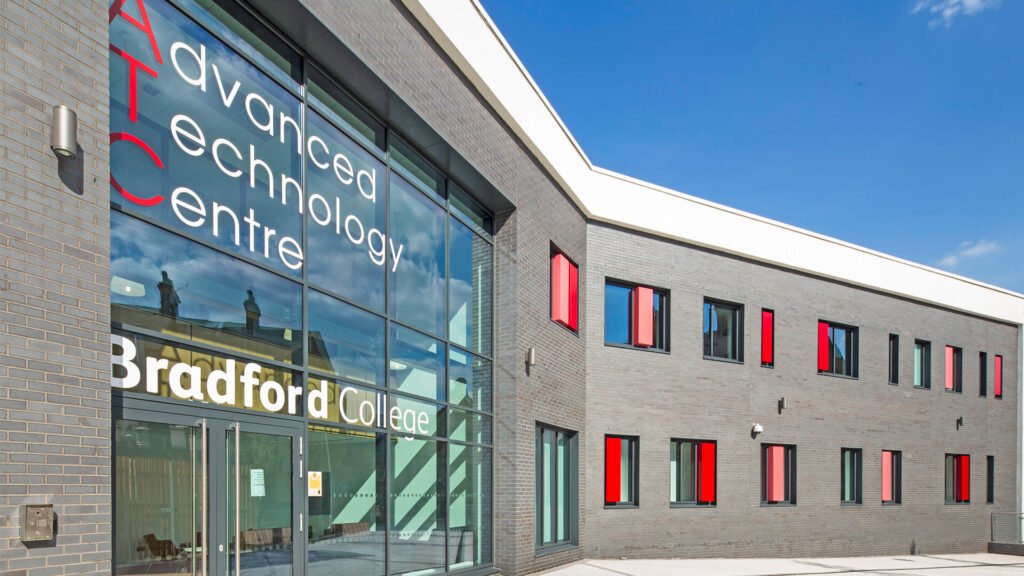Introduction to the Advanced Technology Centre
An Advanced Technology Centre (ATC) serves as a hub for innovation, research, and the development of new technologies. These centres play a critical role in facilitating the growth of industries by providing the resources, infrastructure, and collaboration necessary to transform ideas into actionable solutions. In today’s world, where the pace of technological advancements continues to accelerate, having a dedicated space for such work is more important than ever. Whether it’s artificial intelligence, biotechnology, or renewable energy, an ATC can foster breakthroughs that shape the future.
ATCs are typically established by universities, governments, or corporations looking to advance their R&D capabilities. These centres act as bridges between academic research and industrial application, bringing together experts, scientists, and engineers to work on innovative solutions. The ATC’s influence extends into various fields, from healthcare to aerospace, allowing society to benefit from cutting-edge innovations.
In this article, we’ll dive deeper into the importance of ATCs, explore their core functions, and examine how they contribute to global technological progress.
The Role of an Advanced Technology Centre
At its core, an Advanced Technology Centre focuses on research and development in specific technology fields, often acting as a multidisciplinary nexus where various sectors converge. Its primary role includes:
- Facilitating high-level research projects.
- Providing a collaborative environment for academics and industry professionals.
- Pushing forward technological innovations.
1. Research and Innovation Hub
One of the primary purposes of an ATC is to act as a research hub. These centres invest significant resources in pushing the boundaries of science and technology, allowing researchers to experiment with cutting-edge tools, techniques, and methodologies. Whether it’s breakthroughs in artificial intelligence or innovations in green energy, ATCs are key players in pioneering advancements that impact entire industries.
By offering specialized equipment and facilities, these centres empower researchers to develop technologies that would otherwise be impossible to achieve in a standard laboratory or university setting. For example, consider the Advanced Technology Centre at the University of Cambridge, which focuses on quantum computing, advanced materials, and biotechnology—fields that demand an immense investment in both infrastructure and expertise.
2. Industry Partnerships and Collaboration
ATCs are renowned for fostering collaboration between the academic and corporate worlds. Companies are increasingly seeking to partner with these centres to gain access to cutting-edge research and expertise. These partnerships enable businesses to stay competitive in their respective fields by applying the latest technologies to their operations.
Industry partnerships allow businesses to participate in long-term research projects without bearing the full cost of development. In return, the ATC benefits from real-world applications of its research, ensuring that its work has immediate value to the broader market. Companies like IBM, Microsoft, and Google often collaborate with Advanced Technology Centres to drive advancements in AI, data analytics, and cloud computing.
3. Technology Commercialization
Another key role of an ATC is technology commercialization. The innovations developed in these centres are often transformed into marketable products, services, or solutions. The commercialization process involves translating theoretical research into practical, user-ready applications. Many start-ups and businesses owe their existence to breakthroughs made within an ATC.
ATCs can also provide mentorship and financial support to start-ups, helping young entrepreneurs transform their ideas into viable businesses. For instance, Stanford University’s Advanced Technology Centre has supported numerous start-ups in Silicon Valley, helping shape the technology landscape globally.
Key Sectors Impacted by Advanced Technology Centres
The scope of an Advanced Technology Centre extends to a variety of industries, including healthcare, manufacturing, energy, and IT. These sectors rely heavily on technological advancement to remain competitive and meet the ever-evolving demands of consumers.
1. Healthcare and Biotechnology
ATCs have a transformative effect on the healthcare sector by enabling the development of new drugs, medical devices, and diagnostic tools. Biotechnology companies and pharmaceutical industries are among the primary beneficiaries of these innovations. With access to state-of-the-art laboratories and research teams, healthcare professionals are able to explore cutting-edge treatments for diseases like cancer, Alzheimer’s, and diabetes.
For instance, the Advanced Technology Centre for Translational Research at Oxford University has contributed to several breakthroughs in cancer immunotherapy, saving countless lives.
2. Manufacturing and Automation
Manufacturing has been revolutionized by advances in automation, robotics, and 3D printing, much of which has been incubated within ATCs. These technologies have enabled companies to improve efficiency, reduce waste, and customize products at scale.
In particular, ATCs play a critical role in the Industry 4.0 revolution by providing manufacturers with the tools and expertise to adopt smart factories. These centres help design and implement advanced robotics systems, Internet of Things (IoT) applications, and machine learning algorithms, driving the future of intelligent manufacturing.
3. Renewable Energy and Sustainability
The transition to clean energy requires significant advancements in both technology and infrastructure, many of which stem from research carried out in ATCs. These centres are pivotal in creating and optimizing renewable energy solutions such as solar panels, wind turbines, and electric vehicle technologies.
For example, the Advanced Technology Centre at MIT is working on improving the efficiency of solar energy storage systems, bringing the world closer to a sustainable energy future.
Emerging Trends Shaped by Advanced Technology Centres
As technological advancements continue to evolve, ATCs are pushing the envelope in areas that will define the future.
1. Artificial Intelligence and Machine Learning
AI and machine learning are reshaping numerous industries, from healthcare to finance. ATCs are at the forefront of AI research, developing algorithms that enable computers to process data, make decisions, and solve complex problems. From autonomous vehicles to smart cities, the future of AI is being written in these centres.
2. Quantum Computing
Quantum computing is another frontier being explored by Advanced Technology Centres. By harnessing the power of quantum mechanics, researchers are developing computers capable of processing information exponentially faster than traditional systems. These advances could lead to breakthroughs in cryptography, material science, and drug discovery.
3. Biotechnology and Genetic Engineering
The intersection of technology and biology is yielding unprecedented results. Advanced Technology Centres working in the field of biotechnology are making significant strides in genetic engineering, from gene editing with CRISPR technology to personalized medicine based on genetic profiles.
Challenges Facing Advanced Technology Centres
While ATCs hold enormous potential, they also face challenges in terms of funding, talent acquisition, and maintaining relevance in rapidly changing industries.
1. Funding and Resource Allocation
Many ATCs depend on government grants, corporate partnerships, and academic institutions for funding. As the competition for research funding increases, these centres must continually demonstrate their value and impact.
2. Attracting Talent
To remain at the cutting edge, an ATC must attract top-tier Talent from across the globe. This can be a challenge as competition for skilled researchers and engineers is intense, especially in emerging fields like AI and biotechnology.
3. Staying Relevant
Technology evolves rapidly, and ATCs must continuously update their research focus to remain relevant. Focusing on obsolete technologies could risk losing funding and industry partnerships.
Final Thoughts
The Advanced Technology Centre plays an indispensable role in driving technological advancement across multiple industries. By fostering collaboration between academia, industry, and government, these centres help transform theoretical research into real-world solutions that shape our future. Whether it’s through developing new medicines, advancing AI, or creating sustainable energy sources, the impact of ATCs is profound and far-reaching.
As industries continue to evolve, so too will the role of the ATC. The future promises even more groundbreaking innovations, all of which will find their roots in these hubs of technological excellence.
Questions and Answers:
Q: What industries benefit the most from Advanced Technology Centres?
A: Industries such as healthcare, manufacturing, and renewable energy benefit significantly from ATCs due to their reliance on cutting-edge technological innovations.
Q: How do Advanced Technology Centres contribute to industry partnerships?
A: ATCs provide a collaborative environment for academic researchers and industry professionals to work together, allowing for the development of real-world applications of scientific research.
Q: What are some emerging trends being explored in Advanced Technology Centres?
A: Emerging trends include artificial intelligence, quantum computing, and biotechnology, all of which are being researched and developed within ATCs.
References:
University of Cambridge. Advanced Technology Centre Research Overview.
IBM Corporate Partnerships.
Stanford University. Silicon Valley Innovation Hub.
Oxford University Translational Research Centre.
Industry 4.0 and Automation: The Future of Manufacturing.
MIT Energy Initiative.
Google AI Research.
Quantum Computing Research at IBM.
CRISPR and Genetic Engineering Innovations.


